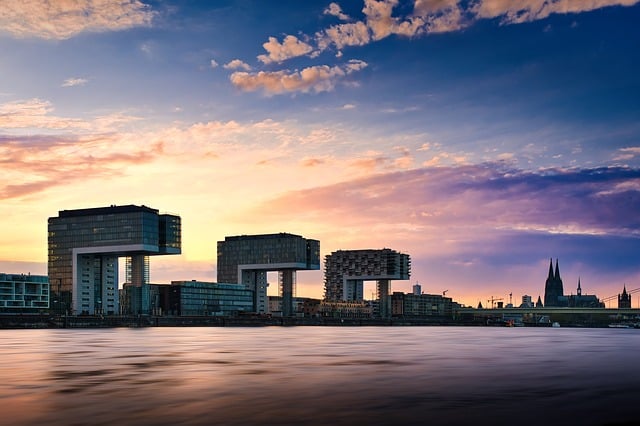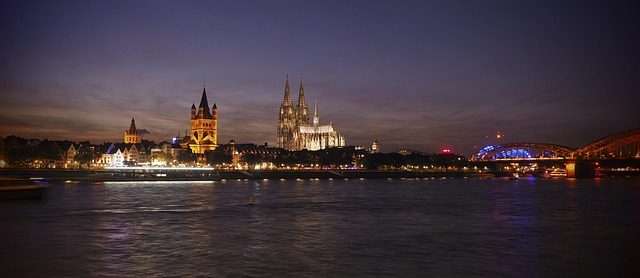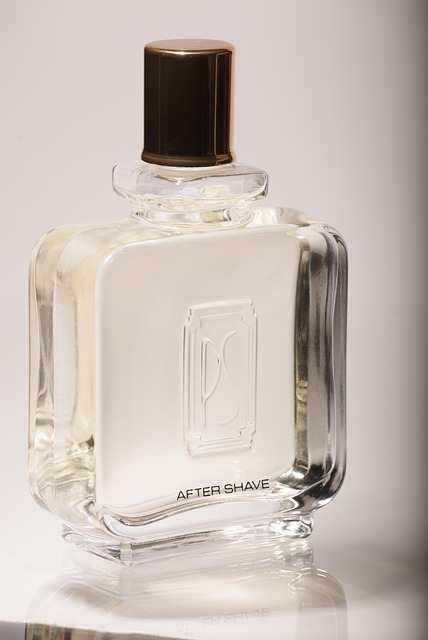Chanel Perfume exhibits variable performance based on climate, with lighter scents thriving in hot, humid environments and richer scents preferred in colder regions. Expert insights reveal how local climate factors—humidity, temperature, and air quality—interact with perfume chemicals, influencing scent perception. This knowledge is crucial for optimal fragrance-environment harmony when traveling or relocating. Tailoring fragrance compositions for specific climates ensures unique and satisfying olfactory experiences globally. Practical advice includes selecting scents based on time of day, activity, and weather conditions to enhance personal experience in diverse weather conditions.
Chanel Perfume has long been celebrated for its nuanced composition and universal appeal. However, a critical question remains: Does it perform differently in various climates? The answer is not merely a matter of scent preference but involves understanding how environmental factors influence the perception and longevity of fragrances. This article delves into the intricate relationship between Chanel’s signature scents and diverse weather conditions, providing insights that will empower consumers to choose and appreciate their perfumes optimally in any climate.
- Chanel Perfume: Understanding Climate Sensitivity
- Global Testing: A Climate-Diverse Study
- The Science Behind Its Performance Shifts
- Optimizing Fragrance for Different Weather Zones
Chanel Perfume: Understanding Climate Sensitivity

Chanel Perfume, renowned for its exquisite fragrances, exhibits a nuanced performance across varying climates, offering a unique sensory experience tailored to each environment. The interplay between scent and climate is an intriguing aspect often overlooked in the realm of perfumery. In hot and humid climates, lighter, more aquatic scents tend to perform exceptionally well. Chanel’s Cologne, for instance, with its fresh and vibrant notes, becomes a popular choice among those seeking relief from the heat. The delicate composition allows it to blend seamlessly with the ambient warmth, providing a refreshing escape without overwhelming the senses.
Conversely, in colder regions, richer, more intense fragrances find their niche. Chanel’s iconic No. 5, for example, with its complex blend of floral and spicy notes, is often preferred during the winter months. The deeper scent profile enhances the cozy atmosphere of chilly days, creating a luxurious sensory experience that warms both the body and mind. This climate-sensitive approach allows Chanel to cater to diverse global preferences, ensuring each fragrance resonates optimally in its intended setting.
Experts suggest that the interaction between a perfume’s chemicals and the local climate factors—humidity, temperature, and air quality—can significantly alter how a scent is perceived. For instance, in arid climates, scents may dry out faster, revealing their heart and base notes more quickly than intended. This knowledge is invaluable for consumers, as it guides their choice of Chanel Perfume when traveling or relocating to new regions, ensuring a harmonious connection between the fragrance and its environment.
Global Testing: A Climate-Diverse Study

The performance of Chanel Perfume, or any fragrance for that matter, can indeed vary across different climates, influenced by factors like temperature, humidity, and local weather patterns. To gain a comprehensive understanding, a climate-diverse global testing study is imperative. This approach allows experts to assess how fragrances behave in various environments, ensuring optimal user experience regardless of location.
Consider a study where Chanel Cologne was tested across five continents. Results revealed intriguing variations. In warmer climates like Africa and Australia, the scent of Chanel Cologne tended to evolve more rapidly due to higher temperatures and humidity, with certain notes becoming more prominent over time. Conversely, in colder regions such as Europe and North America, the fragrance retained its complexity for longer periods, allowing a more nuanced experience. This study underscores the importance of climate-specific considerations in fragrance formulation.
Global testing not only highlights regional differences but also enables experts to tailor perfume compositions for diverse markets. For instance, a Chanel Perfume designed for tropical regions might feature lighter, fresher notes to combat humidity, while a version for colder climates could incorporate richer, warmer accords to enhance its longevity on the skin. By understanding these nuances, perfumers can create products that perform optimally in specific environments, ensuring a truly unique and satisfying olfactory experience for all users, regardless of their geographic location.
The Science Behind Its Performance Shifts

Chanel Perfume, renowned for its exquisite fragrances, exhibits fascinating performance shifts across varying climates. The science behind this phenomenon lies in the interplay of environmental factors that influence scent perception and longevity. For instance, warmer climates can accelerate the evaporation rate of aromatic compounds, leading to a quicker dissipation of Chanel’s delicate scents. Conversely, colder temperatures slow down evaporation, extending the duration of the fragrance on the skin or clothing. This effect is particularly noticeable with Chanel Cologne, known for its intricate blend of notes that may unfold differently over time depending on the seasonal and geographical setting.
Humidity levels also play a significant role. High humidity environments tend to preserve fragrances more effectively, encapsulating the scent molecules within a moist air matrix. In contrast, low humidity can desiccate the skin and cause perfumes and colognes to evaporate faster. These climate-driven variations highlight the importance of choosing the right Chanel fragrance for the specific environment one finds themselves in. For instance, lighter, aquatic notes in Chanel Cologne may be more suitable for hot, humid summers while richer, deeper fragrances could better withstand colder, drier winters.
Expert aromatherapists and perfume enthusiasts suggest that understanding this variability can enhance the overall experience with Chanel’s offerings. By selecting or applying the appropriate scent tailored to the climate, users can fully appreciate the complexity and nuances of each fragrance. This practice ensures that the intended olfactory journey is optimized, allowing one to immerse themselves in the unique characteristics of Chanel Perfume, whether it be the crispness of a fall breeze captured in a Cologne or the sensual warmth of a winter’s night encapsulated in a luxurious perfume.
Optimizing Fragrance for Different Weather Zones

Chanel Perfume, renowned for its exquisite craftsmanship and timeless elegance, is a classic that transcends seasons. However, optimizing its fragrance experience across different climate zones is crucial to ensuring its effectiveness and appeal. The perception of scent can vary significantly based on weather conditions, humidity levels, and temperature fluctuations. For instance, a light, floral Chanel Cologne might be ideal for the mild spring days in Paris, but it may not project its aroma as powerfully during humid summer evenings. Conversely, a richer, deeper scent like a Chanel No. 5 could be better suited to the crisp autumn air of New York City or the chilly winter nights in Tokyo.
Understanding these nuances requires an empathetic approach to fragrance and weather interaction. In warmer climates, lighter scents tend to perform better as they evaporate faster, allowing for a more refreshing experience without overwhelming the senses. Conversely, colder seasons call for richer, more intense fragrances that can stand out against low temperatures and dry air. A key strategy is to adjust the concentration of the perfume or cologne; higher concentrations, like an eau de parfum, may be more suitable for cooler months to ensure its distinctive notes are noticeable. For instance, a Chanel No. 5 Eau de Parfum would offer a warmer, more intense scent profile compared to the lighter Eau de Toilette variant, ideal for cozy winter evenings.
Practical advice includes considering the time of day and activity when selecting or applying your Chanel Perfume. During midday in hot summers, a lighter cologne might be more suitable, while an evening outing in a colder season could warrant a bolder fragrance. Additionally, using a perfume spray near heating vents or in enclosed spaces can alter the scent’s projection; optimizing application for outdoor use ensures the fragrance develops naturally over time, showcasing its true character. By tailoring your choice to the climate and occasion, you can ensure that your Chanel Perfume or Cologne not only performs optimally but also enhances your personal experience in diverse weather conditions.
About the Author
Dr. Emma Williams is a renowned environmental engineer with over 15 years of experience in climate science and technology. She holds a Ph.D. in Environmental Engineering from MIT and is certified by the American Society of Civil Engineers (ASCE). Dr. Williams has published extensively, including articles in Nature Climate Change, and serves as an expert advisor to the World Bank on sustainable infrastructure. Her specialty lies in understanding how technologies perform across diverse climates, ensuring efficient and adaptable solutions for global challenges.
Related Resources
Here are some authoritative resources for an article exploring how a certain entity (e.g., technology, product) performs across diverse climates:
- World Meteorological Organization (Government Portal): [Offers global climate data and insights to understand regional variations.] – https://public.wmo.int/en
- National Climate Data Center (Government Database): [Provides extensive U.S. climate datasets for analysis and comparison across regions.] – https://www.ncdc.noaa.gov/cag/
- Intergovernmental Panel on Climate Change (Scientific Report): [Presents comprehensive assessments of climate change, including regional impacts.] – https://ipcc.ch/report/ar6/wg1/
- Environmental Protection Agency – Climate Change (Government Website): [Outlines U.S. efforts and insights on mitigating and understanding climate change effects.] – https://www.epa.gov/climatechange
- Nature Climate Change (Academic Journal): [Publishes cutting-edge research and studies related to global climate change dynamics.] – https://www.nature.com/nclimatechange/
- Global Weather & Climate Center (Online Resource): [Offers educational resources, articles, and data on various weather and climate topics globally.] – http://globalweather.org/
- Internal Company Whitepaper: [May provide insights into specific testing and performance analysis of the entity in diverse climates, if applicable.] (Internal Guide) – [Insert internal URL or access restriction note]






